This produces so much heat that a typical air cooler cannot handle.
This is where the liquid cooling system comes to your rescue.
It effectively keeps the CPU temperature at the optimal level.
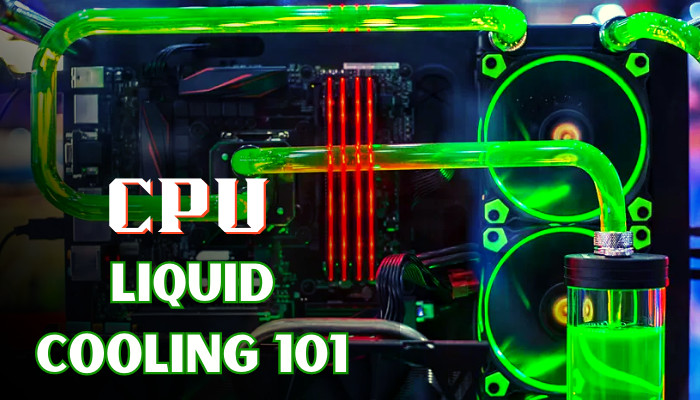
But what are liquid coolers, how do they lower the processor temperature and are they really safe?
Youll find out these and a whole lot more in this article.
What is Water Cooling?
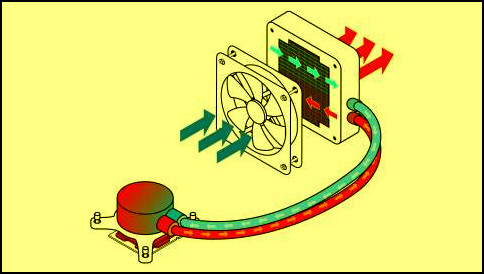
Liquid or water cooling is used to reduce the temperature of CPUs and, occasionally, GPUs.
In liquid cooling systems, a liquid, typically water, is circulated through pipes.
The water absorbs heat from the components and releases it through a radiator.
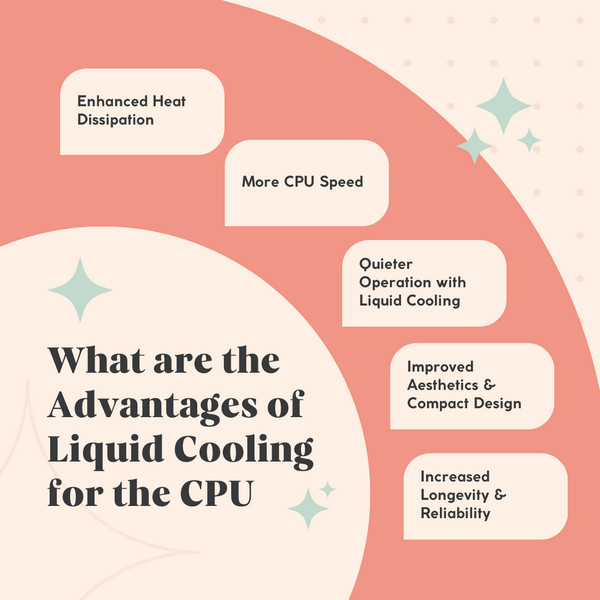
As electronic devices operate, they generate heat.
However, computer systems with powerful components produce higher temperatures than air cooling can effectively handle.
It is particularly common inoverclocked systems, configurations with multiple GPUs, or high-density setups.
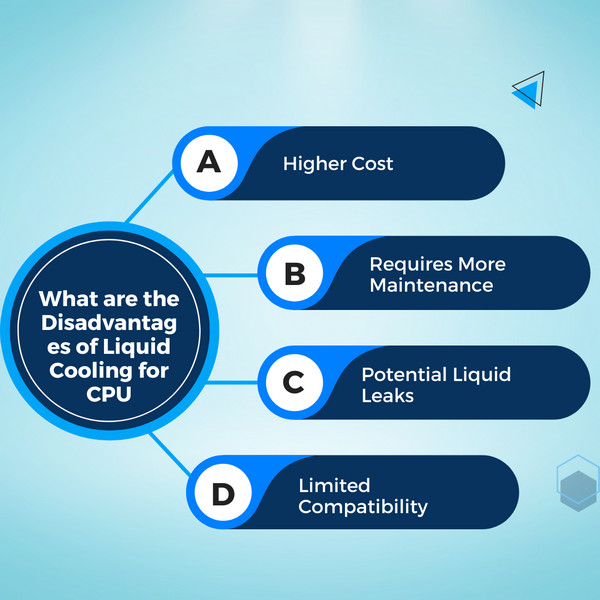
Water cooling is primarily used in personal and gaming computers.
It lets overclocked CPUs and GPUs run smoothly and maintains optimal component temperatures.
It extends the longevity of the parts and enables the use of powerful components in compact form factors.
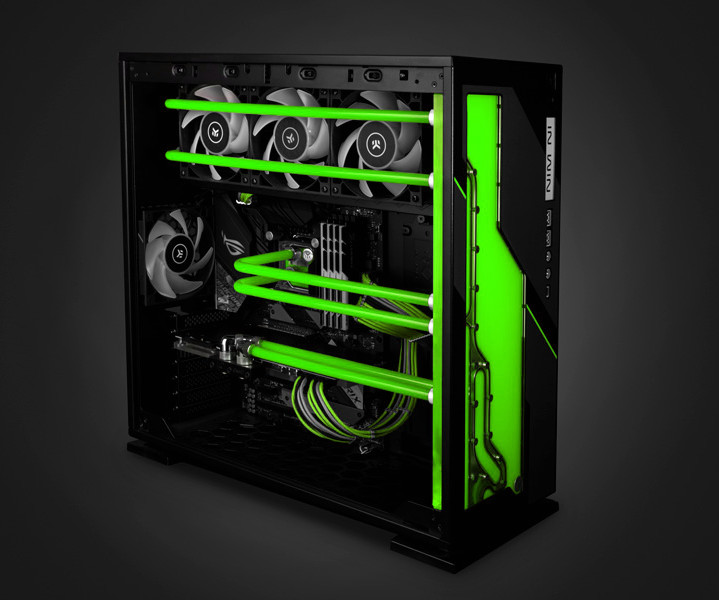
What are the Components Used in Liquid-Cooled Systems?
Water cooling systems comprise several components: apump,water block,pipes,radiator, and an optionalreservoir.
The pump primarily aims to circulate the liquid throughout the entire system.
It is also possible to incorporate multiple water blocks in a single system.
Flexible or rigid pipes and tubing are used to move the water within the system.
for your convenience, weve tested and compiled the lists of thebest water-cooling kitsandwater-cooling pumpsfor your gaming PC.
Sometimes, we mixbiocidewith water to prevent the growth of algae or bacteria.
How Does Liquid CPU Cooling Work?
CPU Liquid cooling systems can be categorized into two primary types:Open Loop&Closed Loop.
Open loop systems require users to create and assemble the system using individual components.
Conversely, closed-loops, often called AIO, are pre-arranged units you’re free to buy.
The IHS plays a crucial role in enhancing heat transfer efficiency.
As the coolant flows through the water block, it absorbs heat from the baseplate.
It continues its path through the system, moving upward using one of two tubes leading to a radiator.
The cooled liquid again circulates through the system to repeat the process.
The heated liquid exits to a radiator positioned at the back of the case, dissipating the heat outside.
This complication arises from installing each cooling system component individually.
In such configurations, the server is typically kept within a rack.
At the same time, separate tubes bring the filtered and cool liquid into the system.
What is the Best Liquid for CPU Cooling?
Wateris an excellent option for liquid cooling due to its remarkable thermal conductivity and heat capacity.
A liquid cooling loop can be easily set up using justdistilled waterand abiocidal.
The biocide protects all the parts from corrosion and stops bacteria from growing.
Also, it doesnt affect the color of the water, resulting in a transparent liquid.
It will create vibrant hues and improve the visual aesthetics inside your PC case.
Heres thelist of the best coolantsyou can buy right now!
What are the Advantages of Water Cooling for the CPU?
Liquid cooling for CPUs offers enhanced performance and user experience.
It dissipates heat, keeping the CPU cool during demanding tasks for improved stability and longevity.
Lower temperatures prevent throttling and enable higher clock speeds.
By utilizing liquid coolant, you could dissipate heat more effectively from the CPU.
In some cases, these individuals have been able to double processor speeds by implementing intricate liquid-cooling setups.
Another advantage of liquid cooling is its ability to reduce noise levels during operation.
Traditional heatsink-and-fan combinations often generate significant noise as the fans work tirelessly to circulate large volumes of air.
Liquid cooling minimizes the engine noise triggered by these fans, resulting in a quieter computing experience.
Liquid cooling systems often come with sleek, customizable designs that enhance the visual appeal of a computer build.
This can help create a clean and organized look, especially in systems with transparent panels or custom lighting.
Water cooling systems can contribute to the durability and stability of the CPU.
What are the Disadvantages of Liquid Cooling for CPU?
Although water coolers offer enhanced thermal management for CPUs, they have a few drawbacks.
They require additional investment & maintenance with regular check-ups, cleaning, and monitoring.
Also, theres the risk of water leaks that can permanently damage your PC.
Additionally, the cost can further escalate due to the necessary maintenance and potential repairs.
Although liquid coolers can provide effective heat dissipation, they require occasional maintenance to ensure optimal performance.
Over time, the coolant will evaporate and accumulate debris, affecting cooling efficiency.
You must check coolant levels, clean or replace filters and perform system flushes, which can be time-consuming.
Careful installation and regular maintenance are crucial to minimize the risk of leaks.
Not all computer cases and CPU coolers are designed to accommodate liquid cooling systems.
However, with the guidelines Ive provided here, you could ensure that your system remains in optimal condition.
If you haveClosed Loop Systems, generally you do not require user maintenance.
Also, you must knowhow to tell if the CPU liquid cooler is working.
To begin the maintenance process of your liquid-cooled system, lets start with the radiator.
The radiators fins play a vital role in distributing coolant throughout your PC, effectively keeping your components cool.
However, dust accumulation on the blades is common due to the constant rotation of the fans.
To fix the issue, use eithercompressed airor asoft paintbrushto remove any dust build-up.
This process helps keep the loop clean and ensures its smooth operation.
During the coolant flush, you’re free to also clean the water block.
To minimize oxidation and dust accumulation, disassemble the water block and soak it in a dissolvable solution.
Do a system flush at least once a year.
This process involves draining the existing coolant and changing it with a new coolant.
Now you are equipped with everything you should probably know to effectively maintain your water-cooling PC.
How Long Does Liquid Cooling Last in a CPU?
A high-level all-in-one (AIO) water cooling solution delivers reliable performance for around3 to 6 yearson average.
You cannot just set it up and then forget.
FAQs
Is liquid cooling good for the CPU?
What is CPU cooling liquid made of?
CPU cooling liquid is made of deionized water or a non-conductive & non-capacitive fluid.
Is liquid cooling better than thermal paste?
Liquid metal facilitates a faster and more efficient heat transfer process, leading to reduced CPU temperatures.
Comment below if you have further questions, and well get back to you.